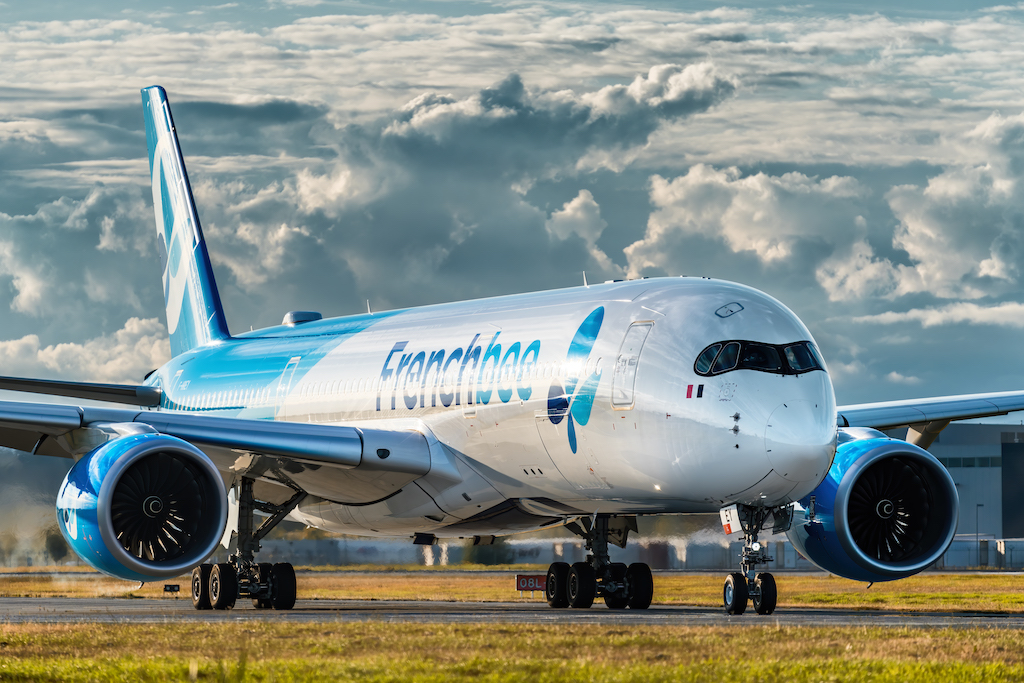Leisure Carrier French Bee Resumes Paused Transatlantic Flights

Photo Credit: French Bee is resuming its pre-pandemic network planning with the launch of Orly-Newark flights. French Bee
French Bee's plans to launch Newark-Paris Orly flights last year were put on ice when the world shut down due to the Covid-19 pandemic. But the French leisure carrier is making good on its expansion, with its first flight on the route returning to Orly on July 15.
"We think now that most of the crisis is behind us, because of vaccinations. the health recovery, and the restart of the economy," French Bee President Marc Rochet told Airline Weekly. "Is it the best time [to start flights? Is it too soon by one month, or too late by one month," Rochet wondered. "We don't know, but we think it's the end of the big crisis, and we think we will grow again."
It may not be the right time, at least in one direction. The U.S. government still bars most European citizens from entering the country, while U.S. citizens are permitted to visit Europe. Because of this, loads on the outbound flight from Newark are three times what they are on the inbound flight from Paris. By the same token, French Bee suspended the San Francisco refueling stops on its Paris-Tahiti flights, because the U.S. prohibits transit passengers from Europe. That flight now stops in Vancouver, but Rochet said it will return to San Francisco "the minute President Biden signs" an order permitting Europeans to enter the U.S.
The carrier will start Newark service three times weekly on an Airbus A350 configured with 411 seats, 35 of which are premium economy. And this is the key differentiator between French Bee and its competitors. Air France operates three daily flights to New York, using both Boeing 787s and 777s, the latter of which are configured with 80 business-class seats. It will be years before Air France is filling that cabin with high-yielding business-class passengers, Rochet said, adding that French Bee does not actively seek business travelers in order to focus on its leisure and visiting friends and relatives (VFR) core market. "The market is totally different."
Another way the market is different is the growing importance of cargo. Although the inaugural flight from Paris this week had few passengers, it carried more than 10 tons of cargo. "This was part of our decision to restart Newark," Rochet said. "There is a surge in this market."
Another way the market is different — and one that benefits French Bee in Rochet's eyes — is that it's less saturated now. Before the pandemic, 10 airlines served the New York-Paris route. Now, Norwegian Air, XL Airways, and Level have exited the market, and the legacy carriers are operating far fewer flights. "I think it's a big opportunity for us," Rochet said. "We have a niche for one or two years ahead of us," he said, referring to the present lull which will last until the legacy carriers restore their pre-pandemic frequencies on the route. Air France, for example, operated eight daily flights on the route before the crisis.
Rochet is not concerned about the failure of other low-cost long-haul airlines, arguing that French Bee has a less complex fleet than Norwegian did, for example, and can offset the winter seasonality of the transatlantic with North-South routes to French Polynesia, Reunion Island, and the Caribbean through its sister carrier Air Caraibes. Reunion and Tahiti also see significant VFR traffic from Metropolitan France. "It is not a 100 percent perfect game, but we are being smart and flexible enough," he said.
Although Rochet is confident that French Bee's pricing and product offering make it competitive on the Newark-Paris route now, he is concerned that Air France could use some of the billions in state aid and loans it got during the pandemic to undercut other carriers' pricing. "At the moment we cannot say state aid to Air France have been in a manner that could distort the market," Rochet said. "If they use the money they got from the state to lower pricing, we will be very aggressive."
But Rochet ruled out the Ryanair tactic of pursuing relief through the courts, noting that the Irish discounter has lost almost every case it has pursued. Ryanair's tactics may have more to do with marketing and press than actual relief, he observed.
French Bee did not furlough or lay off any employees during the crisis, but instead got its unions to agree to 10 percent pay cuts in exchange for not reducing headcount. Employees also were eligible for wage support from France. Rochet credits this strategy for why the carrier can resume its pre-pandemic plans so quickly. "We are ready to start again."
The carrier has also resumed its fleet growth. Before the crisis, French Bee had a fleet of three A350s. It took delivery of a fourth last year and paused the rest of its fleet expansion. But now, it has committed to take delivery of an A350-1000 this year and another in the middle of next year, bringing its total fleet to six of the type, where it had expected to be by now.
French Bee has an interline agreement with Alaska Airlines for itineraries through San Francisco, which now have been paused. But Rochet said it is looking for a similar partner on the East Coast for connections via Newark. On the French side, the carrier is facilitating self-connecting passengers, a practice much more common in Europe than in North America. Rochet noted passengers at Orly can also connect to 17 routes on the French high-speed rail system, the TGV.
